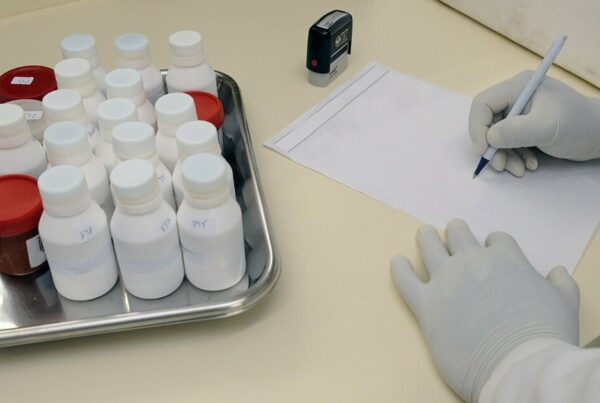The growing complexity of trials is a direct result of a higher demand for safety, accuracy, and timeliness in therapeutic interventions. These pressures come both from the consumer and the regulatory bodies, and this creates several interesting issues of competition in the market.
Achieving the best of both worlds when it comes to speed and accuracy is the goal of any manufacturer, but in an industry with stakes as high as in drug manufacture, there is no room to sacrifice one for the other. Encouragingly, technology is paving the way for improvements across the board, and one of these improvements is arriving in the form of interactive response systems.
Interactive voice response (IVS) and interactive web response (IWR) systems are providing these advantages to both speed and accuracy by organizing unprecedented amounts of data and managing practices at greater complexity than ever before.
The IVRS clinical trials use now has come a long way from the early days, and we’re about to show you some of the things they’re capable of, and what to look for if you’re interested in using your own.
The Motivation for and Rise of IVRS in Clinical Trials
The exponential growth of the pharmaceutical industry since the turn of the century has been driven by new drug discoveries, new development methods, the advancements of technologies such as smart devices and their reduced cost of manufacture, and improvements in the software that provides the fabric of our analytics and communications systems.
The growth of clinical trials followed along with the improvements to these technologies, and this came with an increase in the number of candidate molecules being investigated and registered, new device trials, and new biobetters. This naturally leads to an increase in complexity and a corresponding focus on improved safety.
There is new pressure on pharmaceutical companies to keep up with these accelerating shifts and accelerate their processes accordingly to keep up with the competition that arises with this boom in opportunities.
Pressure from the other end comes from more stringent regulations: in response to mistakes in randomization and drug dispensing, improved data protection standards, adverse event reporting, and other regulatory factors that keep the demand for safe and effective processes high.
These two forces combine to demand a higher quality product, delivered faster and more safely than ever before, and this concept defies convention. With finite resources, it’s impossible to add value to an efficient system at both ends of the equation, and thus something needs to be added.
For both improvements in processes and improvements in safety, more and better data need to be collected. This has forced pharmaceutical companies to adjust their approach and mindset and to hunt for more innovation in the clinical trial design process.
The telecommunications industry, along with IT combined with other industries to cater to the needs of various customers. In doing so, Interactive Voice Response Systems (IVRS) were developed, and the healthcare industry quickly jumped to customize these services for its needs.
Using these services, information can be accessed by patients, clinicians, and other stakeholders around the clock, from the convenience of their phones. From there, it was a small step to incorporate web-based applications and tools such as randomizers and inventory management into the systems. Initially designed as a backup, interactive Web Response Systems (IWRS) were developed, and the range and scope of these methods quickly became apparent.
The Role of IVRS/IWRS in Clinical Trials
IVRS and IWRS (collectively known as IxRS), have become widely adopted, not only in clinical trials but also in the Banking, Telecommunications, and Retail in order to customize solutions for their customers.

As mobile internet has become more ubiquitous in communities across the planet, IWRS is catching up to the scale of IVRS, and together they are overcoming an enormity of challenges. While systems used to need extensive engineering work to get them set up for use after purchase, now, there are several vendors supplying ready-to-go systems to those who need them.
These systems are rapidly overcoming classic challenges of clinical trials, and gradually expanding to take on even more responsibilities too. Here’s a look at some of the issues that IxRS promises to help with:
Adaptive trial design – The automation capacity of IxRS takes a significant strain off the process of assigning subjects to different treatments and the dispensation of drugs within these treatments. This simplifies a lot of the complexity inherent in adaptive trial design already but also allows for substantial scaling of these data without issue. Working with more complex data in a faster way offers plenty of savings in the time and cost that was previously associated with these bottlenecks.
International trials – Working within multiple regulatory restrictions from various countries used to be a lot more of a difficult thing to manage, and this is significantly eased with IxRS. Further, recruitment, randomization, and drug dispensation can all be accomplished and managed remotely with ease.
Again, this is a huge time-saver and allows for a more rigid adherence to regulations with automated checks and balances.
Patient Data – IxRS can easily manage PROs and works well with the new systems of Clinical Outcome Assessments when the patient is able to use a handheld PRO device, meaning that these questionnaires and reports can be completed and submitted remotely to the IxRS for storage.
The automation of these data collection and storage creates a more unified system that is less prone to duplicates and data insecurity.
Randomization – This is perhaps one of the greatest roles of the systems currently in place; predefined criteria allow the IxRS to randomize subjects in different strata and can be performed separately within each stratum. The capacity of these systems to handle randomization represents a significant benefit to the accuracy and safety of the trial in many ways.
Complex dosing – Another common complexity factor comes with variable dosings. Weight-based or scheduled dosages can be handled easily with the IxRS, and this has implications, particularly for pediatric studies. IxRS can handle very complex dosing algorithms and can maintain them from case to case if needed.
This is yet another application to manage complexity and is one that allows future trials to be designed with increased complexity in mind.
Inventory – IxRS creates an auditable trail for supply and re-supply to sites with electronic receipts and product status reports. This is a huge boost to the efficiency of logistics as it can track warehouse capacity, individual site needs, and vendor availability. It can also handle time-sensitive factors such as refrigerated deliveries or expiry dates.
So, in covering all of these challenges, and the ways in which IxRS can help, many of the benefits are immediately apparent. Next, we can take a look at how these strengths positively affect the running of trials in more detail and discuss the hindrances that sites face when implementing them
The Benefits and Drawbacks of Switching to Interactive Voice Response Systems
Aside from the convenience, availability, and the ease with which these systems can be operated, there are plenty of benefits to trials that IxRS can provide. These benefits are even more powerful, the more complex and at-scale the trial is. Here’s a look at some highlights:
- Increased recruitment capacity.
- Safely run multiple concurrent trials.
- Live data, no latency. This means that the information received is accurate in that moment.
- More advanced integrations happening all the time.
- Ease of implementation and deployment across multiple countries, study types, etc.
- Improved site management.
- Choice of modules.
This last one is important. Being able to pick and choose the features that you need is a strong attraction of a good IxRS. The other benefits are generally centered around the ability of the new systems to deal effortlessly with more the complex and voluminous data required by modern standards of both consumers and regulators.

Resistance to change – Staff need to be present, involved, and accepting of changes in the workplace, and some changes, like the implementation of IxRS, can be a significant overhaul to the ways things are run. Particularly with long-term staff and stakeholders, new tech can be intimidating, and there is a natural resistance to the unfamiliar, and this is one of the key challenges to overcome when working with new systems of any kind.
Introduction – Completing the first hurdle of acceptance is not enough to guarantee the success of the new system. The implementation needs to follow a structured and inclusive process involving all users and management. Communication needs to be clear and continuous throughout. This is another key area in which systems create problems for sites, and could cause loss of market if not considered and mitigated.
Training – When a technology is new for everyone, there are few people qualified to train others. Training needs to be designed and created in advance, time allocated and lessons budgeted for. One thing to look out for, as we’ll mention below, is a vendor with a good onboarding process.
The importance of the initial training is the most significant. Before getting to this stage, there should be an allocated person or team to both receive and administer the relevant information that will allow for users to be brought up to speed carefully and accurately.
As you can tell, the drawbacks of switching to the new system are primarily related to the resources and the attitudes that will need to be managed to get it started. The initial overhead in both of these respects is not insignificant, but with correct planning and strategizing, the change can be made as painless as possible.
That way, the resources invested will pay dividends in the cascade of advancements that come from the correct adoption of such an efficient and powerful system. With the smallest amount of forethought, most of the risks will be averted and within a short period of time, the ROI on a product that can handle new levels of complexity in clinical trials will become a reality.
Picking the Right System for You
So, how do you choose which one to go with? That’s going to depend on quite a few subjective measures, but what we’ll do here is lay out some of the components and considerations to go over before choosing, to help you decide.
First of all, you’ll want to know which modules you will need. Some products are customizable, so if you want flexibility, that’s the first thing to look out for. Then, for modules, you can consider the following:
- Site management – Allows sponsors to activate or deactivate sites, set drug supply, etc.
- Cohort management – Allows sponsors to update cohort targets or open and close cohorts as needed.
- Product management – Allows the sponsor to update product details before shipping to sites.
- Enrolment – Assigning subjects to their treatments, randomizing patient data
- Drug dispensation – Automatic assignment of unique kit numbers to dispense investigational drugs to patients in accordance with the defined dosage protocols
- Audit trail – Proof of receipt, accountability, and other key elements to a robust paper trail
- Emergency unblinding – This is a handy feature in case of adverse events, the ability to immediately expose relevant, important details of the patient.
Different products will have different capacities within these modules, and other modules may be available in addition. Choosing the right one will depend on your needs. There are going to be numerous factors specific to your site and your trials that need to be taken into account, so it’s important that you establish these at the beginning.
Regardless of your needs, and as long as the complexity of your study desires it, there are some fundamentals to consider before picking a system. When planning to invest in an IxRS, you need to know what can be expected to happen after purchase. This means selecting the package that will most closely meet your needs in the early stages of adoption and help you avoid some of the hurdles we mentioned in the previous section.
Onboarding – As mentioned, the primary challenges with the new system will be the learning curve and the adjustment period. A vendor with good onboarding practices will be the best choice to aiding with this friction and will implement the necessary training to get the product working to your needs. Good onboarding can’t be overstated as a key component to the ease of implementation.
The sponsor – It is ultimately the decision of the sponsor as to which systems are used, and they should be aware of and consider various aspects before choosing, such as the complexity of the study, the need for integration with other systems, the number of locations and nations, the budget, and other key components.
The vendor – You’ll want to know from them whether the product is up to date, has the latest reporting features, and the details of the features it has. Again, look for the support that’s offered, post-purchase.
The configuration – Early systems needed to be programmed by hand with their randomization logic and other protocols. You’ll want to know how hands-on the setup needs to be, and many modern packages come almost ready out of the box, so shop around for one that can be configured with your available resources.
In general, you can split up the considerations into three categories, each representing a stage of the implementation of your new system. Before committing, you’ll need to have stakeholder support. During the hunt for a product, you’ll need sponsor backing, clear communication, and a thorough understanding of the components you require.
Finally, after purchase, you will need to have prepared for a smooth implementation, make the best use of the vendor’s onboarding, and get training out there to those who need it as effectively and rapidly as possible.
Conclusion
Increased competition, in conjunction with increasingly stringent regulations, means that manufacturers of drugs are necessarily going to have to adopt more advanced technologies to keep up. Interactive Response Systems are establishing themselves as the future of clinical trials, and as such, pharmaceutical companies need to be on board.
These new systems are improving in their integrations, their customizations, and their ability to be configured out of the box, so the risk and investment required for adoption is decreasing steadily. Their applications, meanwhile, are growing.
A large component of their utility is the flexibility in what they can handle. Aside from obvious advancements in the volume of data, IWRS in clinical trials can handle a range of responsibilities that would otherwise be taken up by error-prone and time-consuming practices.







